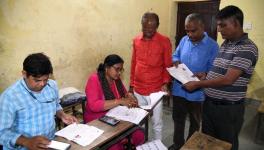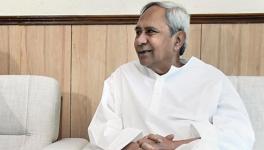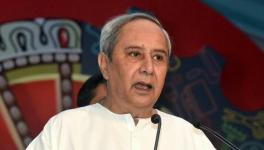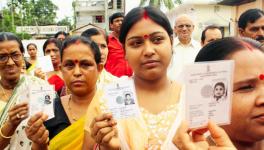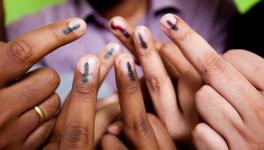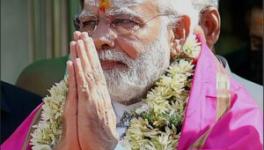MP Witnesses 300 per cent Spike in Counterfeit Currency Post Demonetisation
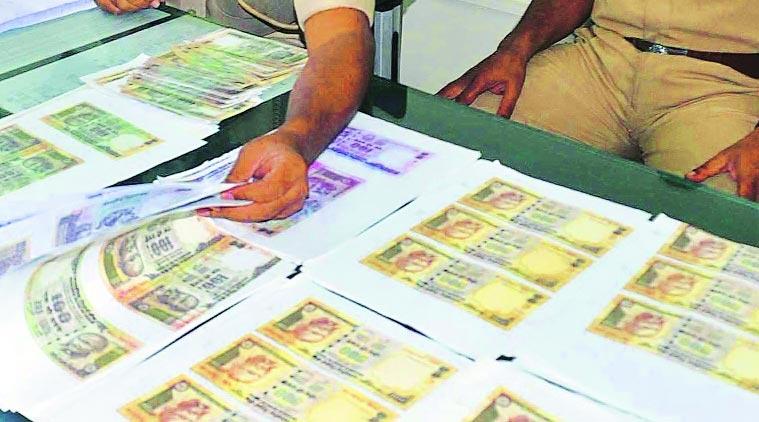
Bhopal: On November 8, 2016, the union government announced that ₹500 and ₹1000 notes would cease to be legal tender. The government had claimed that the move would diminish the size of the shadow economy by rooting out black money and counterfeit currency used for funding illicit activities including terrorism.
However, the move to curb counterfeit currency seems ineffective in Madhya Pradesh as the state reported a 300 per cent spike in fake currency seized by the state police post-demonetisation. In the last 20 months, the police have seized ₹ 1.29 crore (new and old currency notes).
As per the data provided by the Madhya Pradesh Special Task Force (MPSTF), in around 40 cases (till August 2018) of fake Indian currency notes (FICN), different police agencies of the state have seized ₹ 1.29 crore counterfeit currency. Interestingly, in 2015 and 2016 before the ban, the police had seized ₹ 31.73 lakh and ₹10.76 lakh, respectively. After adding, it sums up to around ₹ 42.5 lakh only, which shows that there has been a three-fold jump in counterfeit currency in the state since the note ban.
Making mockery of the union government and the RBI’s claim that the new currency notes equipped with latest features can’t be counterfeited, the accused were printing the new currency in a normal photo studio with the help of high quality papers, colour printers, Xerox machines and glitter pen.
Of the seized ₹ 1.29 crore counterfeit currency, ₹ 29 lakh worth of new notes in denominations of ₹ 500 and ₹ 2000, and old notes worth ₹ 1 crore were seized by the Indore police a month ago.
In the last 20 months alone, Bhopal Crime Branch have busted 6 to 7 cases of fake currency in which the offenders were using photocopy of the notes. In one case, the crime branch got a major lead on an inter-state fake currency notes’ printing racket and later the case was transferred to the STF.
Crime Branch and other police agencies mostly deal with fake cases of the forged currency but if they get any major lead of inter-state or any international connection, they transfer the case to STF for in depth investigation.
The Bhopal Crime Branch Assistant Superintendent of Police (ASP), Rashmi Mishra said, “There is no difference in fake currency note cases post-demonetisation. They (fake currency note rackets) are photocopying new notes of small denomination and circulating it in rural areas widely, where people don’t know much about fake notes.”
People get easily manipulated as they are under the impression that the Reserve Bank of India or Government of India is changing old notes with the new once more. And as these are the new notes, they don’t pay much attention to it.
MODUS OPERANDI
Fake currency are of two types – printed and photocopied, though, the punishment under both the cases are same. As many as 80 to 85 per cent cases are of photocopy while cases of printing and inter-state smuggling are of 15 per cent.
High Quality Photocopy Machine, Colour Printer and Glitter Pen
During the police interrogation, the accused had admitted that they used hi-tech scanners, photocopy machines, colour printers and glitter pens to give a real look to the notes.
They would buy good quality paper popular as China paper, scan the notes and after perfecting the counterfeit in photoshop, they would print it with one of the best quality colour printers. Later, they would make a number of copies by using the latest photocopy machine.
To give an even more perfect touch, they used glitter pen to put the security thread (line lies in the middle on the note) to the notes.
Recalling one such case, the Bhopal Crime Branch ASP, Mishra said, “In one case, the accused were photocopying new notes of ₹ 2000 and 500 in a photo studio in the state capital, Bhopal, by using high quality papers (popular as China paper) and colour printers. They circulated it in rural areas, petrol pumps mostly at midnight. Whenever anyone asked about the authenticity of the notes they hailed it as new notes released by the Government of India after the note ban.”
“They use glitter pen for marking the security thread. Acting on a tip off, we had nabbed a gang of four with ₹ 2 lakh worth of fake notes,” she added.
INTER STATE AND INTERNATIONAL CONNECTION
Unlike photocopy, printing of fake currency is very exacting. As per the police findings, till now, no link of printing fake currency has been reported in Madhya Pradesh as it comes through the inter-state channel racket.
“High quality printed notes enter Madhya Pradesh through West Bengal, Bihar, and Orissa, where printing of illegal currency notes are rampant and are supplied to other states. It is mostly connected to the international boards,” said a senior official of the Madhya Pradesh STF requesting anonymity.
Printing and photocopying are two different things. For printing, it takes too much effort, time, and money, but printed notes are much closer to the original.
He further said, “Last year, Bhopal Crime branch busted a case of fake currency notes which was linked to an inter-state fake currency gang, active in West Bengal, Bihar and Orissa.”
When questioned about the presence of cases where fake currency gangs were linked to neighbouring countries, he replied, “In some cases, we found a link with Bangladesh, Nepal and Bhutan but not Pakistan, though, further investigation is on.”
Replying to the question of a spike in forged currency cases, he said, “Note ban has nothing to do with the issue of counterfeit currency. Both are different issues.”
On August 18, Indore police had nabbed three people carrying ₹ 1 crore worth of illegal notes in denomination of ₹ 500 and ₹ 1000. During the police interrogation, the accused revealed that they had got the notes from Aurangabad, from a trader hailing from Surat.
This is not only the case in Madhya Pradesh; post-demonetisation, ₹ 21.54 crore counterfeit currency has been seized across the country. In reply to a question raised in the Lok Sabha, the Union Minister of State for Home Affairs, Hansraj Ahir informed the House on February 7, 2018, counterfeit currency to the tune of ₹21.54 crore was seized by agencies after demonetisation.
He said that the information received from security and intelligence agencies indicated that Pakistan is involved in manufacturing and smuggling of fake currency into India. However, no documentary evidence of counterfeit notes of Pakistani origin being seized since demonetisation has been recorded.
If caught, the police can book them under sections 467, 471, 489 (B), 489 (C) and other relevant sections of the IPC.
Additional Director General, Special Task Force (STF) Madhya Pradesh S. W. Naqvi refused to comment on the issue. Talking to the reporter over phone, he said, “I will not make any statement into this matter and neither am I accountable to the press.”
Data of the number of cases and amount seized related to FICN cases from year 2015 to 2018

The data excludes the ₹1 crore seized by the Indore police on August 18, 2018.
Get the latest reports & analysis with people's perspective on Protests, movements & deep analytical videos, discussions of the current affairs in your Telegram app. Subscribe to NewsClick's Telegram channel & get Real-Time updates on stories, as they get published on our website.









